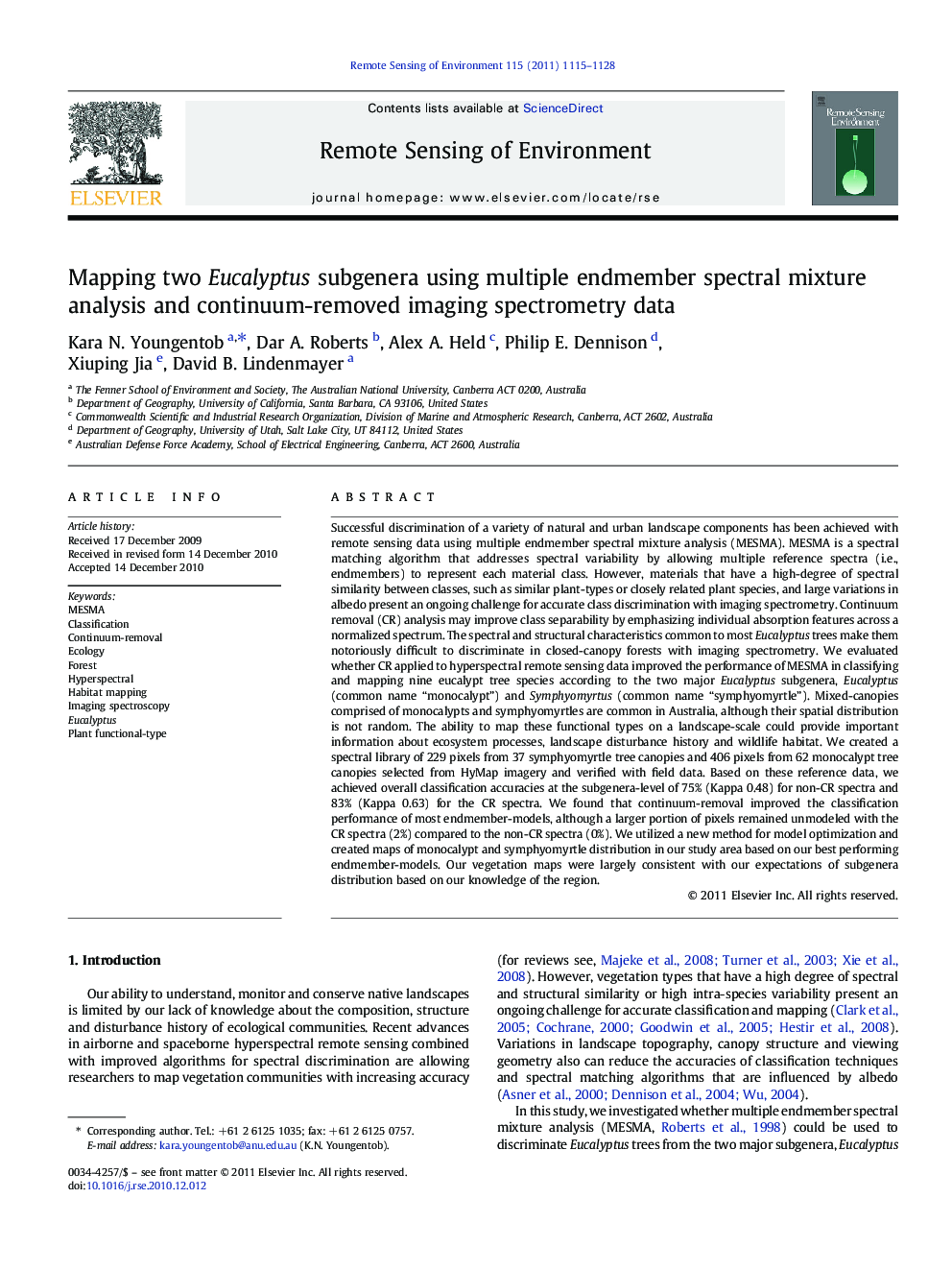| کد مقاله | کد نشریه | سال انتشار | مقاله انگلیسی | نسخه تمام متن |
|---|---|---|---|---|
| 4459680 | 1621292 | 2011 | 14 صفحه PDF | دانلود رایگان |

Successful discrimination of a variety of natural and urban landscape components has been achieved with remote sensing data using multiple endmember spectral mixture analysis (MESMA). MESMA is a spectral matching algorithm that addresses spectral variability by allowing multiple reference spectra (i.e., endmembers) to represent each material class. However, materials that have a high-degree of spectral similarity between classes, such as similar plant-types or closely related plant species, and large variations in albedo present an ongoing challenge for accurate class discrimination with imaging spectrometry. Continuum removal (CR) analysis may improve class separability by emphasizing individual absorption features across a normalized spectrum. The spectral and structural characteristics common to most Eucalyptus trees make them notoriously difficult to discriminate in closed-canopy forests with imaging spectrometry. We evaluated whether CR applied to hyperspectral remote sensing data improved the performance of MESMA in classifying and mapping nine eucalypt tree species according to the two major Eucalyptus subgenera, Eucalyptus (common name “monocalypt”) and Symphyomyrtus (common name “symphyomyrtle”). Mixed-canopies comprised of monocalypts and symphyomyrtles are common in Australia, although their spatial distribution is not random. The ability to map these functional types on a landscape-scale could provide important information about ecosystem processes, landscape disturbance history and wildlife habitat. We created a spectral library of 229 pixels from 37 symphyomyrtle tree canopies and 406 pixels from 62 monocalypt tree canopies selected from HyMap imagery and verified with field data. Based on these reference data, we achieved overall classification accuracies at the subgenera-level of 75% (Kappa 0.48) for non-CR spectra and 83% (Kappa 0.63) for the CR spectra. We found that continuum-removal improved the classification performance of most endmember-models, although a larger portion of pixels remained unmodeled with the CR spectra (2%) compared to the non-CR spectra (0%). We utilized a new method for model optimization and created maps of monocalypt and symphyomyrtle distribution in our study area based on our best performing endmember-models. Our vegetation maps were largely consistent with our expectations of subgenera distribution based on our knowledge of the region.
Research Highlights
► We present a new approach for classifying and mapping imaging spectrometry data.
► We combined two powerful spectral analysis techniques, MESMA and continuum-removal.
► We used this approach to classify and map Eucalyptus according to their subgenera.
► Continuum-removal improved the classification performance of most endmember-models.
Journal: Remote Sensing of Environment - Volume 115, Issue 5, 15 May 2011, Pages 1115–1128